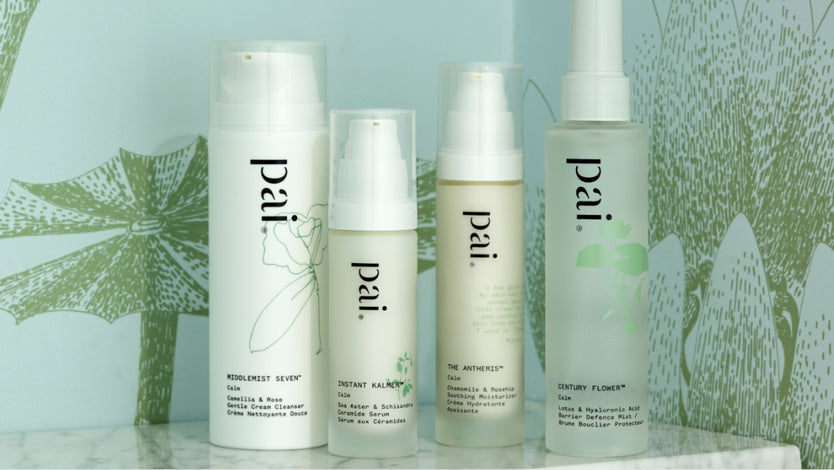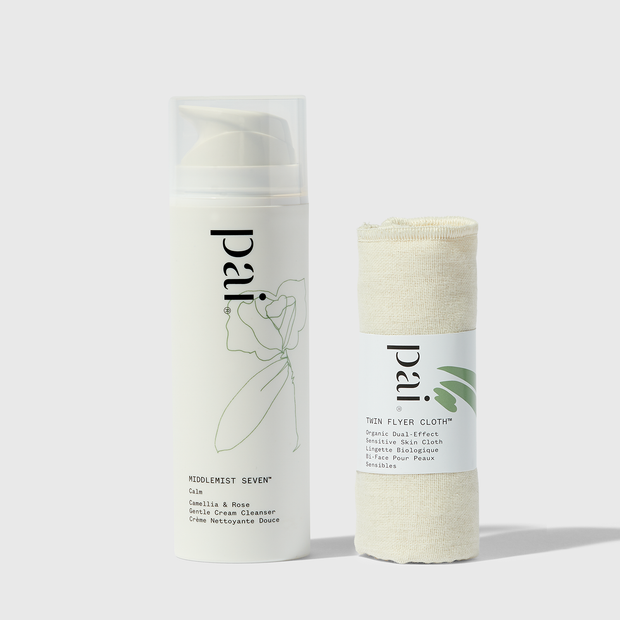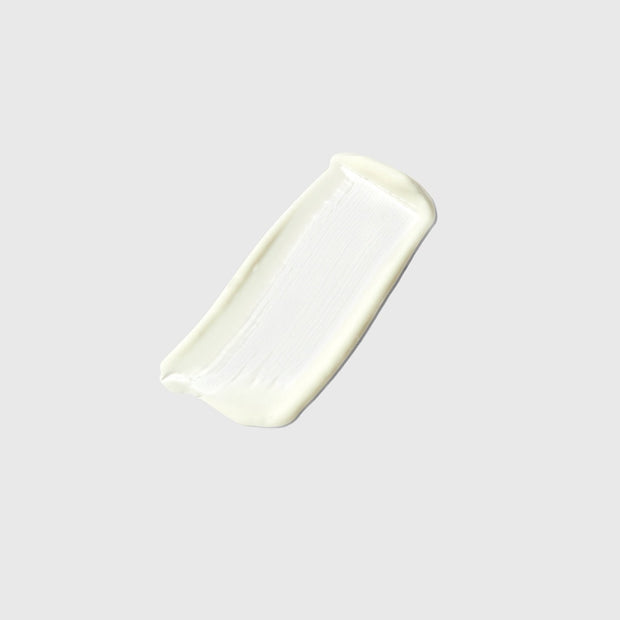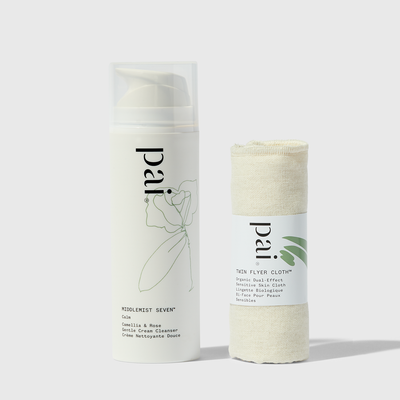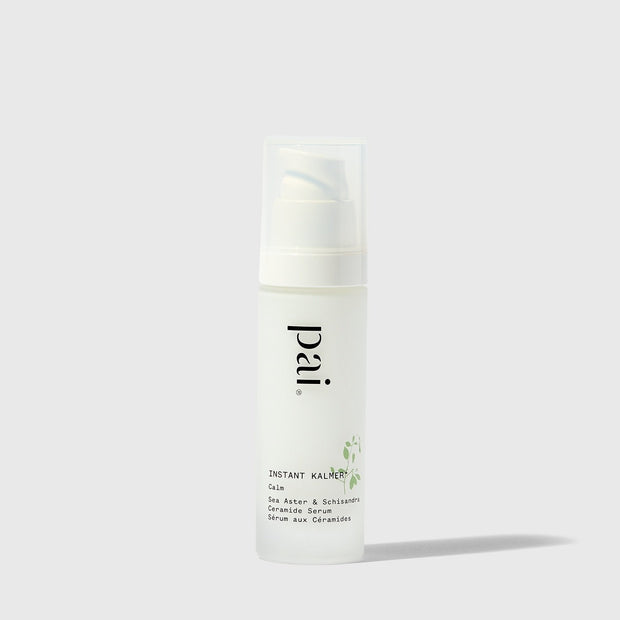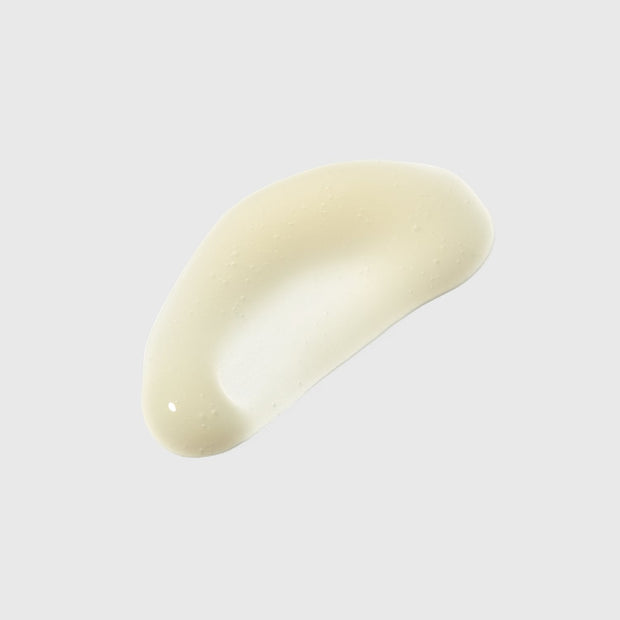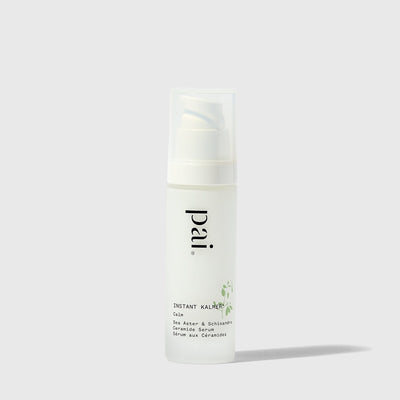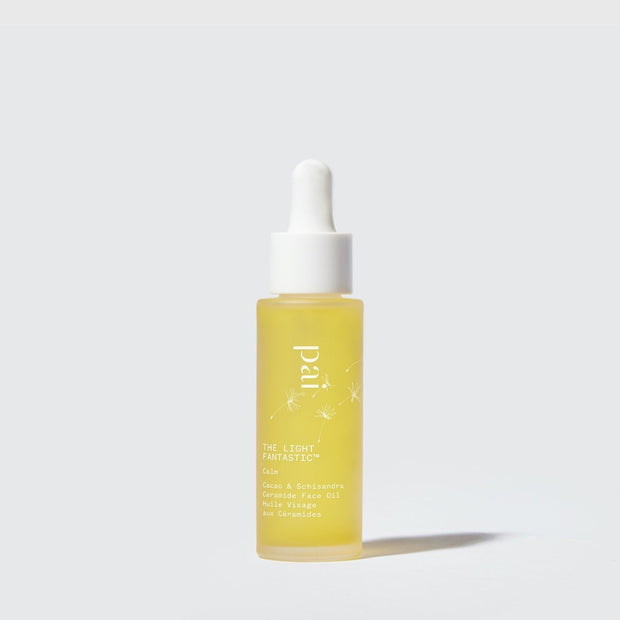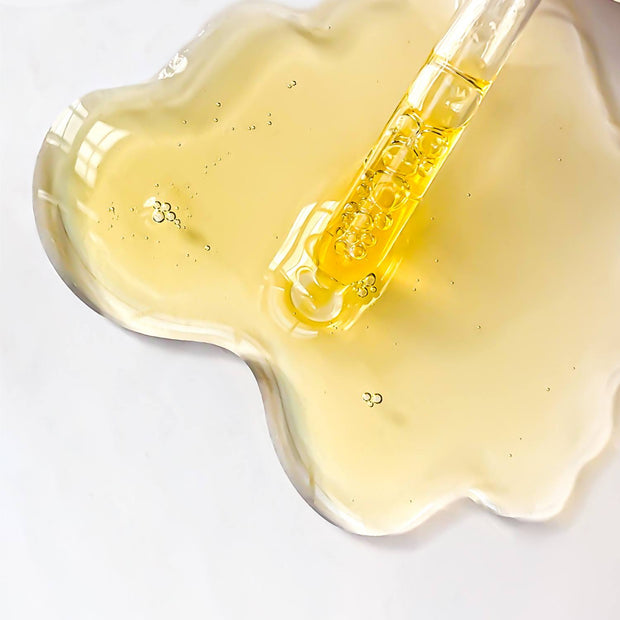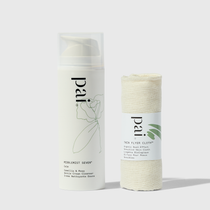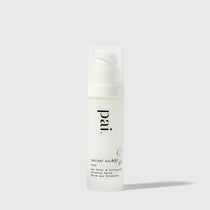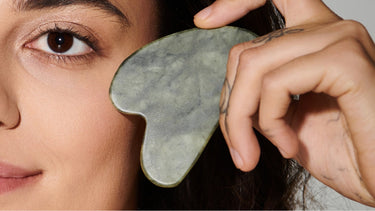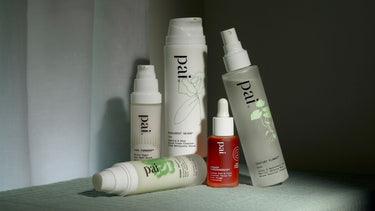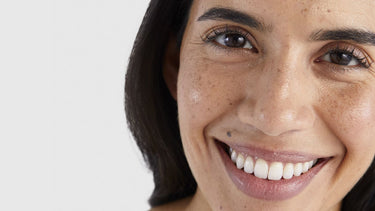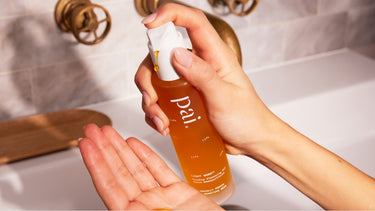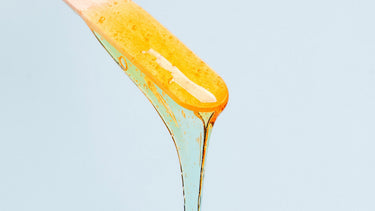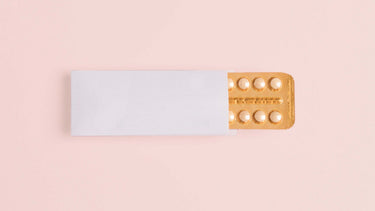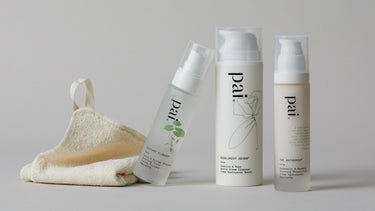While eczema is an incredibly common skin condition (it’s believed to affect one in ten adults in the UK), it’s often associated with the body and hands. But what if you’re suffering with dry, itchy, scaly skin on your face?
You could be experiencing facial eczema, also known as atopic dermatitis, facial dermatitis or atopic eczema. Face eczema is an inflammatory skin condition that creates those same dry and flaky patches, only on the face - most often on the cheeks, around the eyes and on the scalp.
As with any skin issues, a gentle and tailored skincare regimen using ingredients you know and trust is key to managing flare-ups. With that in mind, here’s your ultimate guide to dealing with facial eczema - from what causes it in the first place to the lifestyle changes that can ease the itch.
Watch Sarah's top 5 tips for managing eczema

What causes eczema?
The million dollar question. Eczema is often hereditary, and is more common in children - it can even be something they grow out of - but though there’s no specific cause, there are all kinds of triggers that can make eczema flare up at any time.
Stress is a common factor, while in recent years irritating skincare preservatives such as Methylisothiazolinone (MI) have been outed as key culprits.
The most common causes of an eczema flare-up are:
- Allergies, including food allergies
- Stress and lack of sleep
- High temperatures and sweating
- Air that’s too dry or too humid
- Sunlight
- Cold, harsh weather
- Irritating fabrics such as wool and polyester
- Harsh ingredients and detergents

What does eczema look like?
Everyone’s skin is different, so eczema flare-ups can range in appearance and severity. For some it’ll be small patches of sore, dry and cracked skin that looks raw and itches once in a while. For others, it could be widespread, inflamed skin, that’s unbearably itchy 24/7. But the telltale difference between eczema and a simple case of dry skin is that it won’t disappear on its own.
Eczema shows up differently depending on your skin tone; while lighter skins usually experience redness, in darker skin tones it can become darker brown, purple or grey.
The main symptoms of eczema include:
- Red or grey patches
- Dry, flaky skin
- Skin that is lighter or darker than usual, or thicker
- Itchy skin
- Cracked skin
- Rough, leathery or scaly patches of skin
- Irritated skin, particularly in creases such as elbows and the backs of knees
- Oozing or crusting
The problem with the agonising itch of eczema is the potential for scratching - which only makes matters worse, causing skin to crack and bleed, or even become infected. The discomfort can also mean sleepless nights, anxiety and stress; all of which are potential triggers. It’s a vicious circle, but one you can break with careful management.
The different types of facial eczema
There are three types of facial eczema - and knowing which one you have is the first step to treating it.
Atopic dermatitis
The most common form, atopic eczema often affects those who suffer with asthma or hayfever - or have a family history of them. It can strike at any age, but usually starts in childhood, and its main characteristic is the itch.
Contact dermatitis
As the name suggests, this starts after something external damages the skin; a strong irritant (irritant contact dermatitis), or continuous exposure to an allergy-triggering substance, such as nickel or a skincare ingredient (allergic contact dermatitis).

Seborrheic dermatitis
Better known as dandruff, seborrheic dermatitis usually affects the scalp - but it can also appear on areas with large numbers of sebaceous glands, such as the eyebrows, sides of the nose and behind the ears. The white or yellow-looking flaky skin is thought to be down to an overgrowth of yeasts, and it can be itchy, sore and even scaly.
How to manage facial eczema
Depending on the severity, eczema can be an upsetting and painful condition - but while there’s no cure, there’s plenty you can do to minimise the number of flare-ups you have and soothe the discomfort.
Whichever type of face eczema you’re experiencing, the key is to approach it from all sides. Your skin is your biggest organ; what’s happening on the surface could be a reflection of anything from poor sleep to food intolerance to your skincare regimen. Read on for how to manage your facial eczema inside and out - and don’t forget the number one rule: try not to scratch.

Track your triggers
Your skin is unique, so there’s no one-size-fits-all list when it comes to identifying and eliminating triggers - if only it were that easy.
Keep a skin diary that details everything from the skincare products you’re using (don’t forget to include shampoo and hair products too) to what you’re eating each day, as well as the weather, how well you slept and your stress levels. Nothing is irrelevant - write it all down, be it positive or negative, and soon patterns will emerge that will help you understand your eczema better.
Once you’ve spotted what makes your skin tick, you can ditch what you suspect may be a trigger and track your progress to see if it helps your symptoms. As well as working out what to avoid, try and identify what helps, too; whether it’s getting a full eight hours or using a soothing cleanser, you’ll soon have a personalised checklist to cut out and keep for calmer skin.
Change up your skincare regimen
Given that we tend to pay more attention to our facial skincare regimens than we do our body, if you have eczema only on your face then it’s time to look at the products on your shelf.
Whether you’re following a 10-step regimen or keeping things minimal, choose every product carefully. With facial eczema, your skin barrier is compromised and struggling to hold onto moisture - so you need a regimen that’s especially designed for sensitive, eczema-prone skin.
Avoid harsh, irritating ingredients such as fragrances, MI, exfoliants, and synthetic foaming agents like Sodium Lauryl Sulfate (SLS) and Sodium Laureth Sulfate (SLES). Instead, look for fragrance-free formulas with ingredients that help to keep moisture locked in.
Thicker creams with calming ingredients such as Chamomile and Rosehip will help to soothe the itch and redness while moisturizing dry skin - and you may find a few drops of Omega-rich Rosehip Oil will help to soften and relieve sore patches.
Scan your INCI lists for skin-strengthening Ceramides - the glue that holds your skin together, they reinforce your skin barrier to build up resilience and ease irritation. Rinse-off products matter, too; choose a hydrating cleanser that won’t strip the skin of its natural oils, and pat dry - never rub.
Change your laundry detergent
We often forget about the products we touch indirectly, but laundry detergents contain fragrances which are left behind in a residue on your clothes - so that fresh scent you love could be what’s causing the itch.
Switch to eco laundry balls or non-bio detergent, using a third of the recommended amount. A longer rinse cycle will help to thoroughly remove the detergents, and avoid overloading your machine so that clothes have the space they need to rinse.
Consider other household detergents, too - steer clear by wearing gloves when using washing-up liquid and cleaning fluids.

Water temperature
A long hot soak or using a hot flannel to cleanse may be tempting when your skin feels irritated, but the soothing feeling is short-lived - and can actually make your eczema worse. Too much hot water strips away the skin's natural oils, which are already depleted, leaving it even itchier. Colder water is better suited to eczema-prone or sensitive skin; it’s less harsh on your compromised skin barrier and can even help to stop the itch, in the same way that a cool compress can help if your flare-up is particularly bad.
Stick to cleansing with cool water on your face. It'll feel more refreshing, and lower temperatures boost circulation too - meaning a healthier glow and reduced redness. Win-win.
See a dermatologist
If you feel like you’ve tried everything and your eczema is still out of control, it’s time to seek expert help. Ask your GP to refer you to a dermatologist - they will be able to confirm a diagnosis (potentially with patch testing or biopsies) and recommend the best treatment. They might prescribe steroid creams or ointments which quickly fight inflammation, and they may check for fungal infections on the skin in case there’s more going on than meets the eye - but don’t worry, these can be easily treated.
Like any form of eczema, facial eczema can be a stressful and painful skin condition - but there are plenty of ways to ease the itch and reduce your flare-ups. All it takes is a little care and attention.
Whatever you do, don’t be afraid to reach out for help, whether it’s to a GP, dermatologist or eczema charity such as the National Eczema Society - and if you need a little help with your skincare regimen, don’t forget Pai offers a free skin consultation service to help you find the products that will best support your skin (with no obligation to buy - we give advice, not a sales pitch).



























